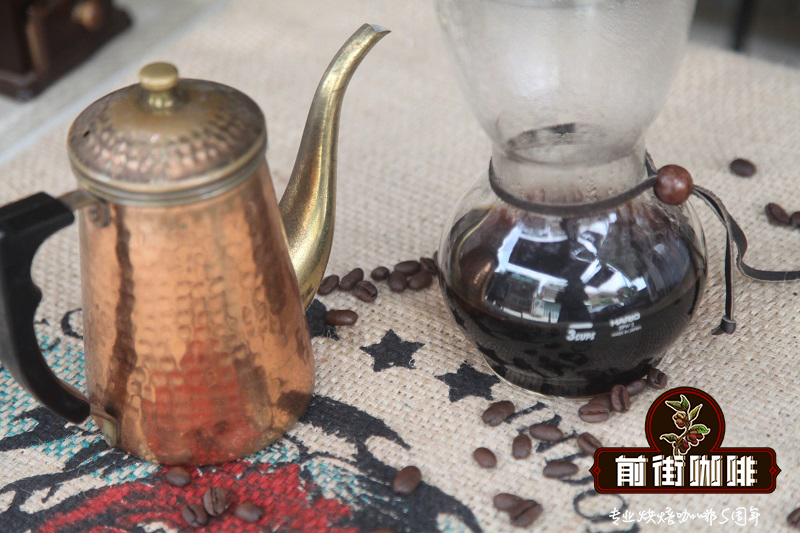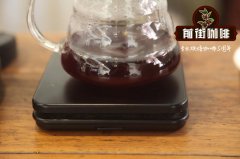How to deal with cat poop coffee beans _ authentic Kopi Luwak price how much is a cup _ Kopi Luwak how to buy

Professional coffee knowledge exchange more coffee bean information please follow the coffee workshop (Wechat official account cafe_style)
Because the civets' intestinal secretions have a special flavor, and the protein is slowly digested after the coffee beans enter the stomach, short peptides and more free amino acids are produced, making the coffee beans much less bitter. This series of processes modifies the smell of coffee beans and gives it a round taste.
These are cat poop coffee beans.
Kopi Luwak, is this "shit thing" really worth that much? Tony Wild is the first person to bring Kopi Luwak into public view, but now he is calling on us to boycott this luxury product together.
Kopi Luwak, also known as Nouak Coffee, is arguably the most expensive coffee in the world.
1. Kopi Luwak's "unexpected popularity"
For the past 20 years, Kopi Luwak has been the "ultimate coffee". With its excellent taste and hard-won, it is regarded as a treasure by coffee sellers around the world, even appearing in CNN News, Oprah Show and Hollywood movies.
I first read the description of Kopi Luwak in a National Geographic magazine in 1981. Ten years later, in 1991, as director of coffee at Taylors of Harrogate, I was the first to introduce Kopi Luwak to the West. At that time, I bought only one kilogram and did not sell it through the company. Instead, I thought that maybe this kind of curiosity would arouse the interest of the local Yorkshire newspapers and radio stations where the company is located. The result was far more than I expected-it was widely reported by newspapers, television and radio. Since then, Kopi Luwak has gradually come into the public eye.
Coconut cats roam coffee plantations in Indonesia, and Kopi Luwak comes from their feces.
two。 The real Kopi Luwak is not a commercially viable crop, just an interesting coffee treasure
The real Indonesian Kopi Luwak is collected from the droppings of a local wild animal called Paradoxurus hermaphroditus. The coconut cat is a timid nocturnal animal that takes advantage of the night to eat ripe coffee fruit during a bumper harvest on the coffee plantation. However, they cannot digest the seeds, that is, coffee beans, which are excreted in their faeces. The coffee beans, which pass through the coconut cat's digestive tract and anal glands (they mark the territory with the smell of the anal glands), are collected by farm workers and washed to form a unique flavor that is widely respected. At that time, because coconut cats were wild, rare in number, difficult to collect feces, and the quality of coffee beans harvested varied from time to time, Kopi Luwak was not a commercially viable crop, but an interesting coffee treasure. that's why I bought it.
How a Kopi Luwak is made: a coconut cat eats coffee fruit and excretes indigestible seeds. When these feces-wrapped beans are washed and dried, they become a priceless Kopi Luwak.
3. The origin of Kopi Luwak has been used as a gimmick and now mostly comes from coconut cats in cages.
But now, it is hard to see the original Kopi Luwak. Today's Kopi Luwak comes mostly from wild coconut cats in cages, and they are generally kept in harsh conditions. A Japanese scientist recently claimed to have invented a way to tell whether coffee beans come from wild coconut cats or captive coconut cats, especially if he can tell whether coffee beans come from wild coconut cats or captive ones.
Many coffee companies around the world are still using the original story about wildlife digestion habits as a stunt to sell Kopi Luwak. Many companies claim that they can only collect 500kg Kopi Luwak a year. And use this scarcity to justify its high price (Kopi Luwak usually sells for $200,400 per kilogram, sometimes more). In fact, although exact figures are not available, I estimate that Kopi Luwak's annual global production is at least 50 tons, much more than that is possible. Now farmers in India, Vietnam, China and the Philippines have joined the production of Kopi Luwak.
An Indonesian farm says it can produce 7000 kilograms of Kopi Luwak a year from 240 caged coconut cats.
4. Now Kopi Luwak has become the product of industrialization, and coconut cats have been treated cruelly.
Today's Kopi Luwak in Indonesia is basically the product of industrial production, and the original ecology is almost impossible. Doesn't that sound a little disgusting? That's true. These timid and solitary creatures have to be huddled in a cage with their own kind, which puts them under great pressure, and an abnormal diet with too much emphasis on coffee fruits also makes them suffer from other health problems. Coconut cats in cages begin to fight with each other, even bite off their legs, feces begin to carry blood, and death is even more common.
In Indonesia, the trapping of wild coconut cats is supposed to be strictly controlled, but they are caged by poachers and forcibly fed with coffee fruits to excrete more feces with coffee beans. and it's all for profiteering and the hypocritical pleasures of some people.
Kopi Luwak's business has been a great success, especially among consumers who spend a lot of money. If you are worried about preparing a birthday present for your tuhao friend, how about spending 6500 pounds on a Kopi Luwak wrapped in 24-karat gold foil at Harrods, the most famous and upscale department store in the UK? In fact, what you buy is no longer Kopi Luwak, just like Thai shit coffee and Brazilian sparrow shit coffee, which are popular all over the world, are just used to satisfy people's insatiable desire for this strange and superficial vanity.
A coconut cat is caged on a farm in Surabaya, Indonesia.
5. Kopi Luwak can't be at the expense of wild animals. It's time to stop artificial farming and production of Kopi Luwak.
At the beginning, I made an inadvertent purchase, which led to such incredible progress. At that time I introduced Kopi Luwak to the UK. It was a strange and novel short story, but now it has been overpriced and over-industrialised. People use it to cover themselves with a veil of hypocrisy to whitewash their abnormal taste and senseless vanity. I hope everyone can think about it, to satisfy their own interest can not be at the expense of wild animals, this cancer can no longer continue, it is time to stop.
Cat shit Coffee Bean Brand recommendation
The wild cat shit coffee beans baked in Qianjie Coffee are fully guaranteed in terms of brand and quality. And more importantly, the performance-to-price ratio is extremely high, a pack of 100 grams, the price is only about 250. According to the calculation of 15 powders per cup of coffee, six cups of coffee can be made in a bag, which costs only about 4 or 50 yuan per cup, which is very cost-effective for coffee shops to sell hundreds of yuan a cup.
Qianjie coffee: Guangzhou bakery, the store is small but a variety of beans, you can find a variety of unknown beans, but also provide online store services. Https://shop104210103.taobao.com
Important Notice :
前街咖啡 FrontStreet Coffee has moved to new addredd:
FrontStreet Coffee Address: 315,Donghua East Road,GuangZhou
Tel:020 38364473
- Prev

Hand-made Yunnan small coffee beans? Flavor characteristics of Yunnan iron pickup and Katim cooking methods
Professional coffee knowledge exchange more coffee bean information please follow the coffee workshop (Wechat official account cafe_style) how to hand make Yunnan small coffee beans? What are the skills of cooking Yunnan Huaguo Mountain with V60? What kind of gouache ratio do you use? [preface] handmade coffee has been very popular in recent years, and many people want to enter this.
- Next

Cat shit Coffee Shop order Price list _ Coffee Bean Flavor taste _ how much is Kopi Luwak per jin
Professional coffee knowledge exchange more coffee bean information please follow the coffee workshop (Wechat official account cafe_style) Kopi Luwak, also known as: civet coffee. Civet coffee is KOPI LUWAK in Indonesian and Civet Coffee in English, where Kopi is coffee and Luwak means civet. Civet coffee is also called Kopi Luwak.
Related
- Detailed explanation of Jadeite planting Land in Panamanian Jadeite Manor introduction to the grading system of Jadeite competitive bidding, Red bid, Green bid and Rose Summer
- Story of Coffee planting in Brenka region of Costa Rica Stonehenge Manor anaerobic heavy honey treatment of flavor mouth
- What's on the barrel of Blue Mountain Coffee beans?
- Can American coffee also pull flowers? How to use hot American style to pull out a good-looking pattern?
- Can you make a cold extract with coffee beans? What is the right proportion for cold-extracted coffee formula?
- Indonesian PWN Gold Mandrine Coffee Origin Features Flavor How to Chong? Mandolin coffee is American.
- A brief introduction to the flavor characteristics of Brazilian yellow bourbon coffee beans
- What is the effect of different water quality on the flavor of cold-extracted coffee? What kind of water is best for brewing coffee?
- Why do you think of Rose Summer whenever you mention Panamanian coffee?
- Introduction to the characteristics of authentic blue mountain coffee bean producing areas? What is the CIB Coffee Authority in Jamaica?

